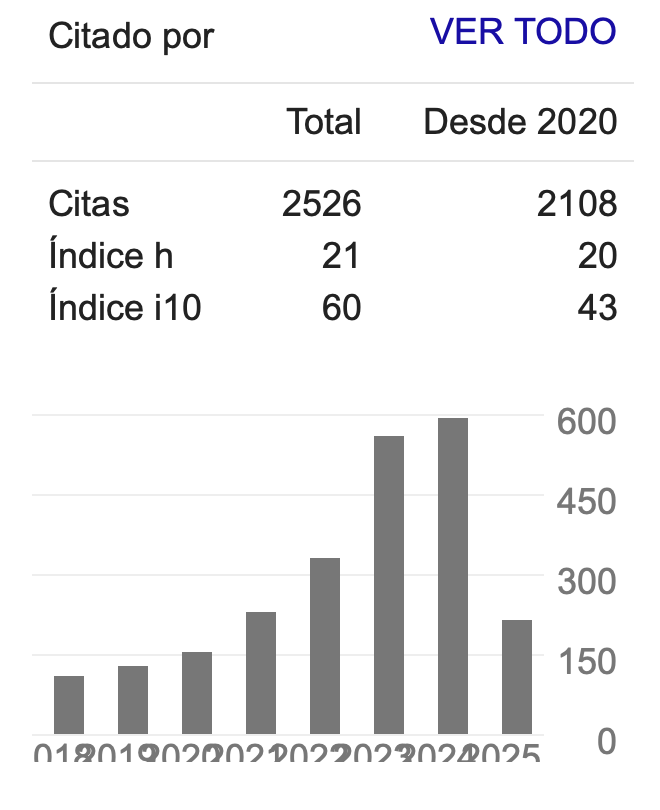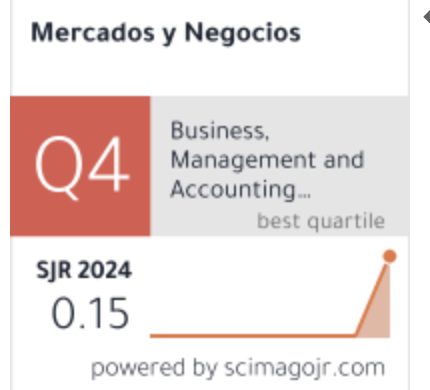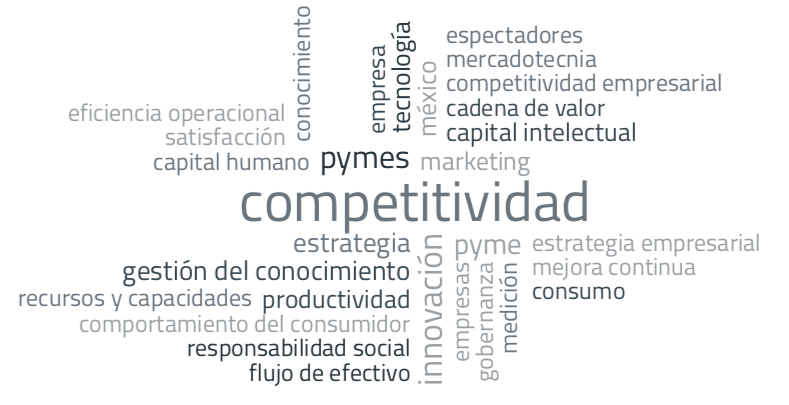Nintendo and the Blue Ocean Strategy: Designing the Four Actions Matrix
DOI:
https://doi.org/10.32870/myn.vi55.7813Keywords:
blue ocean strategy, Nintendo, video game industry, competitivenessAbstract
The purpose of this article is to analyze the strategies adopted by Nintendo within the framework of the four-action matrix of the BOS (i.e., eliminate, reduce, increase, and create). Documentary research was implemented by scrutinizing the scientific bases of information accessible in electronic media (e.g., Web of Science and Scopus). For each of the four actions of the matrix, the following factors were identified: 1. eliminate the expensive face-to-face conferences; 2. reduce the graphic power of the video game console, the budgets, and the deadlines in the development of video games; 3. increase: the brand extension; and 4. create: nostalgic feeling. This study offers valuable lessons and insights for organizational strategists to consider when designing strategies that leverage distinctive characteristics to create competitive advantages that satisfy both established objectives and customer desires and expectations. Furthermore, the work can serve as a reference framework for subsequent empirical research.References
Abdullah, M., Sulong, Z., & Chowdhury, M. (2024). Explainable deep learning model for stock price forecasting using textual analysis. Expert Systems with Applications, 249.
Agnihotri, A. (2016). Extending boundaries of Blue Ocean Strategy. Journal of Strategic Marketing, 24 (6), 519-528. https://doi.org/10.1080/0965254X.2015.1069882
Alghamdi, O., & Agag, G. (2024). Competitive advantage: A longitudinal analysis of the roles of data-driven innovation capabilities, marketing agility, and market turbulence. Journal of Retailing and Consumer Services, 76, 103547.
Argyres, N., Bigelow, L., Nickerson, J., Ozalp, H., & Yilmaz, E. (2025). Strategic Responses to Innovation Shocks: Evidence from the Video Game Industry. Strategy Science. https://doi.org/10.1287/stsc.2023.0104
Benders, J. & van Veen, K. (2001). What’s in a Fashion? Interpretative Viability and Management Fashions. Organization, 8(1), 33–53. https://doi.org/10.1177/13505084018100
Bernal, C. (2022). Metodología de la investigación. Administración, Economía, Humanidades y Ciencias Sociales. Pearson.
Caldwell, C. & Anderson, V. (2017). Blue ocean strategies and disruptive innovation: Creative insights for competitive advantage. En C. Caldwell y V. Anderson (Eds.), Competitive Advantage: Strategies, Management and Performance (97–108). Business Issues, Competition and Entrepreneurship.
Chirinos, N. (2022). Disciplina empresarial para la implementación de estrategias de océano azul. CICAG: Revista Electrónica Arbitrada del Centro de Ciencias Administrativas y Gerenciales, 19(1), 49-60.
Christodoulou, I. & Langley, P. (2019). A gaming simulation approach to understanding blue ocean strategy development as a transition from traditional competitive strategy. Journal of Strategic Marketing, 28(8), 727–752. https://doi.org/10.1080/0965254X.2019.1597916
Church, N. J. (2024). Maintaining Your Marketing Competitiveness Through Marketing Innovations. Mercados y Negocios, 25(51), 3–30. https://doi.org/10.32870/myn.vi51.7713
Čirjevskis, A. (2017). Exploration of qualitative success factors of innovative e-business startups: Blue ocean strategy versus dynamic capabilities. International Journal of Business Excellence, 13(4), 459-478. https://doi.org/10.1504/IJBEX.2017.087755
Cooke, H., Appel-Meulenbroek, R. & Arentze, T. (2019). Adjustment of corporate real estate during a period of significant business change. International Journal of Strategic Property Management, 23(3), 171-186. https://doi.org/10.3846/ijspm.2019.7954
David, F.. & David, F. (2017). Conceptos de administración estratégica. Pearson.
Dvorak, J. & Razova, I. (2018). Empirical Validation of Blue Ocean Strategy Sustainability in an International Environment. Foundations of Management, 10(1), 143-162. https://doi.org/10.2478/fman-2018-0012
Ellinger, A.., Naidoo, J., Ellinger, A.., Filips, K., & Herrin, G. (2020). Applying blue ocean strategy to hire and assimilate workers with disabilities into distribution centers. Business Horizons, 63(3), 339-350. https://doi.org/10.1016/j.bushor.2020.01.009
Erekson, O. & Williams, G. (2022). Moving from Blue Ocean Strategy to Blue Ocean Shift in Higher Education. Tertiary Education and Management, 28(2), 187-207. https://doi.org/10.1007/s11233-022-09092-w
Fils-Aimé, R. (2022). Disrupting the Game: From the Bronx to the Top of Nintendo. HarperCollins Leadership.
Flores, A. & Álvarez, M. (2019). Pokémon Go y sus factores de éxito: diseño de un modelo teórico. Estudios Generales, 35(151), 321-330. https://doi.org/10.18046/j.estger.2019.152.3265
Gallagher, D. (11 de noviembre de 2023). Microsoft’s Next Act: Bending the Videogame Business Without Breaking It. The Wall Street Journal. Link: https://www.wsj.com/tech/microsofts-next-act-bending-the-videogame-business-without-breaking-it-274fa093
Grandío, P. (25 de febrero de 2020). Flops, Gigaflops, y Teraflops: Historia y perspectivas de PS5 y Xbox Series X. Vandal.
Harris, B. (2014). Console Wars: Sega, Nintendo, and the battle that defined a generation. HarperCollins.
Hoang Mai, V., Ngoc Lan, N., Hoai Thu, L., & Nguyen, P. (2022). Blue Ocean Strategy as inclusive innovation policy for implementing disability employment legal rules from Vietnamese enterprise perspective. Lex Humana, 14(2), 208–230.
Inoue, O. (2010). Nintendo Magic: Winning the Videogame Wars. Vertical.
Kim, W. & Mauborgne, R. (2015). Blue Ocean Strategy: How to create uncontested market space and make the competition irrelevant. Harvard Business Review Press.
Kim, W. & Mauborgne, R. (2017). Blue Ocean Shift: Proven Steps to Inspire Confidence and Seize New Growth. Hatchette Books
Lauer, T. (2019). Generic Strategies, Outpacing and Blue Ocean - Discussing the Validity of Three Strategic Management Theories Using Case Studies from Airlines and Grocery Retail. Theory, Methodology-Practice, Review of Business and Management, 15(1), 57-66. https://doi.org/10.18096/TMP.2019.01.06
Leavy, B. (2018). Value innovation and how to successfully incubate “blue ocean” initiatives. Strategy and Leadership, 46(3), 10-20. https://doi.org/10.1108/SL-02-2018-0020
Li, N., Haviv, A., & Lovett, M (2025). Opposing Influences of YouTube Influencers: Purchase and Usage Effects in the Video Game Industry. Marketing Science. https://doi.org/10.1287/mksc.2021.0242
Lindič, J., Bavdaž, M., & Kovačič, H. (2012). Higher growth through the Blue Ocean Strategy: Implications for economic policy. Research Policy, 41(5), 928–938. https://doi.org/10.1016/j.respol.2012.02.010
Madsen, D. & Slåtten, K. (2019). Examining the Emergence and Evolution of Blue Ocean Strategy through the Lens of Management Fashion Theory. Social Sciences, 8(1). https://doi.org/10.3390/socsci801002
Magued, S. (2023). Adapting Global Administrative Reforms to Local Contexts within Developing Countries: Insights into the Blue Ocean Strategy. Administration & Society, 55(10), 1893-1910. https://doi.org/10.1177/00953997231198840
Mirghaderi, S., Aboumasoudi, A., & Amindoust, A. (2023). Developing an open innovation model in the startup ecosystem industries based on the attitude of organizational resilience and blue ocean strategy. Computers & Industrial Engineering, 181. https://doi.org/10.1016/j.cie.2023.109301
Mochizuki, T. (29 de junio de 2019). Sony Positions Next PlayStation for Hard-Core Gamers. The Wall Street Journal. Link: https://www.wsj.com/articles/sony-positions-next-playstation-for-hard-core-gamers-11561800603
Mochizuki, T. (30 de octubre de 2018a). Nintendo CEO Optimistic That Switch Consoles Will Hit Sales Goal. The Wall Street Journal. Link: https://www.wsj.com/articles/nintendo-ceo-optimistic-that-switch-consoles-will-hit-sales-goal-1540898921?mod=searchresults&page=1&pos=10
Mohamud, A. H., Ali, A., & Mohamud, I. (2024). The Effect of Blue Ocean Strategies on Organizational Performance in Some Selected Commercial Banks in Mogadishu, Somalia. International Journal of Organizational Leadership, 13(4), 742-756.
Mourtzikou, A., Stamouli, M., & Emmanouil, D. (2019). Implementation of the Blue Ocean Strategy in Healthcare. International Journal of Reliable and Quality E-Healthcare, 8(2), 36–49. https://doi.org/10.4018/ijrqeh.2019040103
Muhammad, S., Rosmaini, T. & Mehwish, R. (2017). Mediating role of innovation strategy between porter’s red ocean strategy and innovative performance. Advanced Science Letters, 23(9), 9239–9242. https://doi.org/10.1166/asl.2017.10062
Mukira, A., Kariuki, P., & Muturi, W. (2024). Revenue raising value creation strategy and performance of commercial banks in Kenya. European Journal of Strategic Management, 1(1), 1-12.
Needleman, S. (17 de mayo de 2024). Microsoft Plans Boldest Games Bet Since Activision Deal, Changing How ‘Call of Duty’ Is Sold. The Wall Street Journal. https://www.wsj.com/tech/microsoft-call-of-duty-game-pass-53e8930c
Nintendo (2024a). Dedicated Video Game Sales Unit. Link: https://www.nintendo.co.jp/ir/en/finance/hard_soft/index.html
Nintendo (2024b). Archivo de Nintendo Direct. Link: https://www.nintendo.com/us/nintendo-direct/archive/
Nintendo (2024c). Iwata Asks. Link: https://iwataasks.nintendo.com/es/
Ortenblad, A. (2007). The evolution of popular management ideas: an exploration and extension of the old wine in new bottles metaphor. International Journal of Management Concepts and Philosophy, 2(4), 365. https://doi.org/10.1504/ijmcp.2007.015131
Otis, G. A. (22 de abril de 2023). Bud Light Brewer Puts Two Executives on Leave After Uproar Over Transgender Influencer. The Wall Street Journal. Link: https://www.wsj.com/articles/anheuser-busch-shake-up-after-transgender-influencer-was-featured-on-beer-can-a0ed8009
Pìlatti, L., Pereira, G. de Q., Herrera, J., de Lara, L., & Renaux, D. (2024). Blue Ocean Strategy in the Soccer Sector: A Real Madrid Case Study. Retos, 56, 567–576. https://doi.org/10.47197/retos.v56.102328
Porter, M. (1996). What is strategy? Harvard Business Review, 74(6), 61–78.
Porter, M. (1998). The competitive advantage: Creating and sustaining superior performance. Free Press
Porter, M. (2015). Estrategia competitiva: Técnicas para el análisis de los sectores industriales y de la competencia. Grupo Editorial Patria.
Rais, M. (2025). Empirical Study of Social Media Marketing's Impact on Brand Image and Loyalty in Retail, Muscat. Mercados y Negocios, 26(54), 33-56. https://doi.org/10.32870/myn.vi54.7770
Raynor, M. (2016). Strategic Risk: The Risks “of” and “to” a Strategy: The Case of Blockbuster and the Need for Strategic Flexibility. In Green, P. E. J. (Ed.). Enterprise Risk Management: A Common Framework for the Entire Organization, Estados Unidos: Butterworth-Heinemann, 219–230. https://doi.org/10.1016/B978-0-12-800633-7.00016-X
Rodríguez, G. (2020). Una mirada a los orígenes y publicidad de la revista Club Nintendo en México (1991-1999). Americanía: Revista De Estudios Latinoamericanos, (12), 179–212. https://doi.org/10.46661/americania.5325
Ryan, J. (2011). Super Mario: how Nintendo conquered America. Penguin Group.
Shi, X., & Zailani, S. (2025). Capabilities and Resources for Value Creation and Sustainable Competitive Advantage: A Study of the Chinese Video Game Industry. Sustainability, 17(2).
Subramanian, A., Chai, K. & Mu, S. (2011). Capability reconfiguration of incumbent firms: Nintendo in the video game industry. Technovation, 31(5-6), 228-239. https://doi.org/10.1016/j.technovation.2011.01.003
Susilowati, E., Utomo, S. & Setiawanta, Y. (2017). Blue ocean strategy: An investigation of the effect of business strategy, information accounting management system, mental model implementation on managerial performance. Advanced Science Letters, 23(8), 7239-7242. https://doi.org/10.1166/asl.2017.9340
Tilley, A. (21 de septiembre de 2020). Microsoft to Buy Doom Owner in $7.5 Billion Videogames Deal. The Wall Street Journal. Link: https://www.wsj.com/articles/microsoft-to-buy-videogame-maker-zenimax-media-for-7-5-billion-11600697758
Vieira, E. & Ferreira, J. (2018). Strategic framework of fitness clubs based on quality dimensions: the blue ocean strategy approach. Total Quality Management and Business Excellence, 29(13-14), 1648-1667. https://doi.org/10.1080/14783363.2017.129052
Wee, C. (2017). Think Tank—Beyond the Five Forces Model and Blue Ocean Strategy: An Integrative Perspective From Sun Zi Bingfa. Global Business and Organizational Excellence, 36(2), 34–45. https://doi.org/10.1002/joe.21768
Xbox (23 de agosto de 2024). Xbox @ gamescom 2024. [Archivo de video]. Link: https://www.youtube.com/watch?v=RSL8LcqVTug
Yunus, M. & Sijabat, F. (2021). A Review on Blue Ocean Strategy Effect on Competitive Advantage and Firm Performance. Academy of Strategic Management Journal, 20(1), 1-10. Link: https://www.abacademies.org/articles/a-review-on-blue-ocean-strategy-effect-on-competitive-advantage-and-firm-performance-10115.html
Published
How to Cite
Issue
Section
License
Copyright (c) 2025 Adan Jacinto Flores Flores

This work is licensed under a Creative Commons Attribution-NonCommercial 4.0 International License.
Mercados y Negocios by Department of Mercadotecnia y Negocios Internacionales. University of Guadalajara is licensed under a License Creative Commons Attribution-NonCommercial 4.0 International.
The author retains the copyright.








